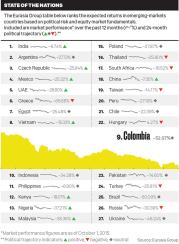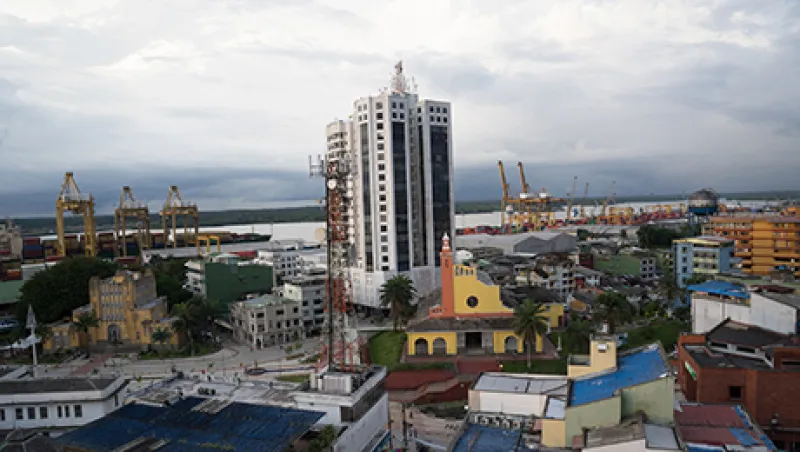After more than 50 years of violence, Latin America’s longest-running guerrilla conflict may finally be ending. Colombian President Juan Manuel Santos made history on September 23 in Havana, Cuba, when he shook hands with Marxist rebel Rodrigo Londoño, leader of the leftist terrorist organization Revolutionary Armed Forces of Colombia (FARC). The long-time adversaries agreed to create a special tribunal to prosecute FARC militants for decades of human rights abuses, from torture to murder to forced disappearances. The agreement offers lenient punishment to militants that cooperate with the justice process and take responsibility for crimes, and promises efforts to locate and compensate the victims. FARC will have 60 days to disarm and demobilize forces after a peace treaty is signed by March. More than 200,000 Colombians, mostly civilians, have been killed in the armed conflict, and an estimated 50,000 people are still missing.
In addition to a safer society, peace for the third-largest economy in Latin America signals a rebound in economic growth and investor confidence, reckons Carl Shepherd, fixed-income portfolio manager at London-based Newton Investment Management, a subsidiary of BNY Mellon. Some seven million people have been displaced since the conflict began in the 1960s. Colombia can expect greater population stability and a rise in productivity from a larger pool of human capital, he adds. The deal should also bring the FARC’s 8,000 members and the territory they control into the formal economy, reducing illegal activity and boosting government revenue. President Santos expects the deal to provide a 1.5 percent annual boost in growth. Swatches of undeveloped FARC-controlled land can also be used for agriculture, mining and oil drilling, which together make up roughly 60 percent of gross domestic product.

The global slowdown has dimmed the economic prospects of emerging-markets countries, including Colombia. Investors have pulled more than $1 trillion from developing countries over the past 18 months, and the MSCI emerging-markets index is down 12.5 percent year-on-year because of tumbling commodities prices, the cooling off of China’s supersonic growth rate and a tightening of international financial conditions, says Ernesto Talvi, Washington-based director of Brookings-CERES Latin America Initiative.
Colombia is Latin America’s third-largest oil producer, and plunging crude prices have sent the peso falling 40 percent against the U.S. dollar over the past year. The cheap peso and poor harvests — by-products of the El Niño weather system — have pushed inflation up to 4.8 percent, above the 3 percent target, and swelled the current account deficit to 5 percent of GDP. In September, the central bank tightened policy for the first time in more than a year, raising its key interest rates 25 basis points to 4.75 percent, the highest level since November 2012. Most analysts expect a hike to 5 percent by year-end. “If it proves too heavy handed, the hike will reduce credit demand and consumption, which will affect investor confidence and won’t be good for domestic growth,” says Newton’s Shepherd. The more likely upshot is increased reputational credit for prudent fiscal management through the mini crisis, he believes.
“We take comfort from the strict fiscal guidelines that the government has in place,” says Shepherd. The administration is letting the currency depreciate and is accepting weaker short-term growth instead of counteracting falling oil prices with extra government expenditure, he explains. The deficit hovers around the government’s 3 percent target while public debt stands at 40.7 percent of GDP. “Colombia is in a strong position to withstand the adverse changes in the global environment,” contends Brookings’ Talvi. The International Monetary Fund forecasts the economy will expand 2.5 percent this year, compared with a 0.3 percent contraction for Latin America as a whole. Colombia has a solid investment-grade credit rating and $45 billion in currency reserves. “Because of this prudence, when the rebound in emerging markets occurs and sentiment improves, Colombia will be one of the top beneficiaries,” Shepherd concludes.
The peace deal still must pass a popular referendum next spring, but positive sentiment abounds. “In an environment in which investors are wary of emerging markets and are looking with a careful eye where to commit resources, a buildup of investor trust and confidence following peace talks will help Colombia differentiate itself and attract capital,” says Brookings’ Talvi. •






